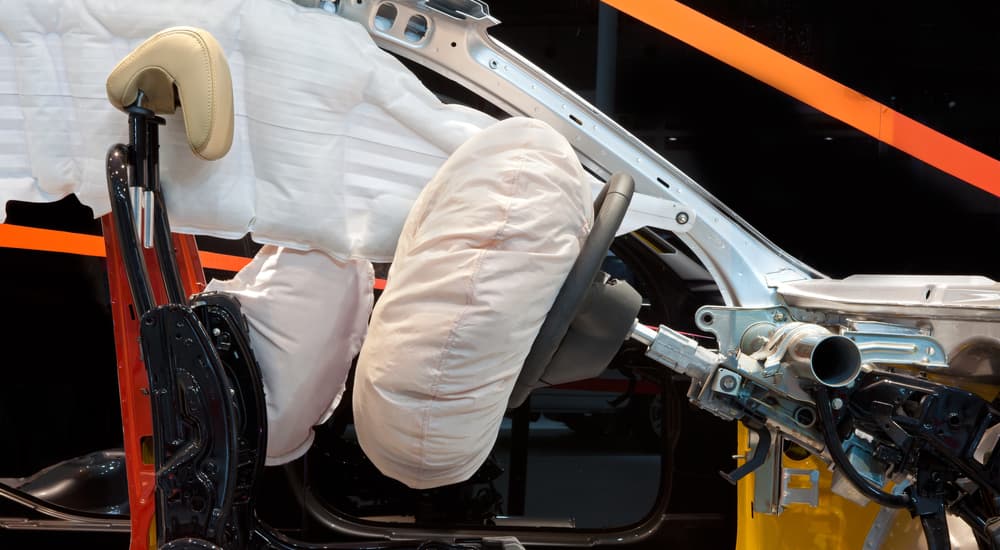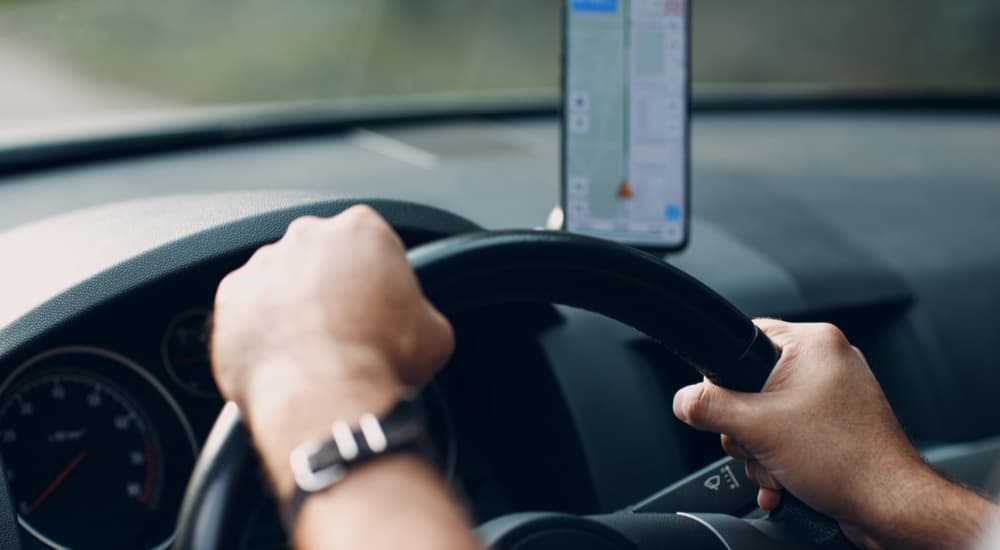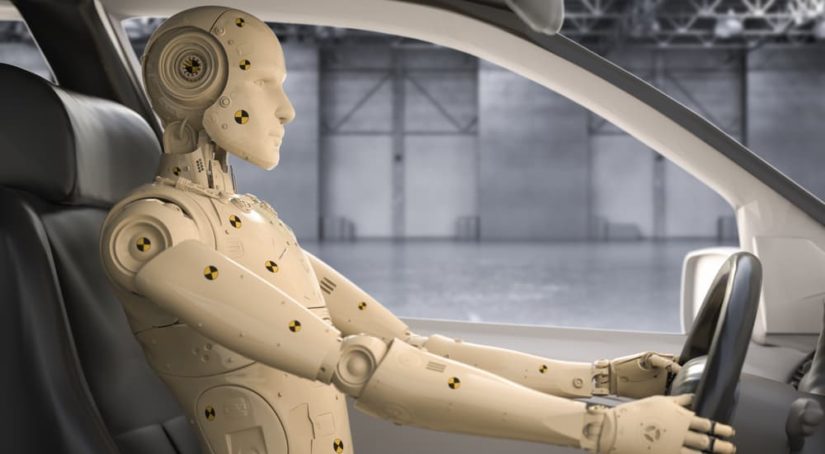Most people would rather drive a safe car. Even if safety isn’t at the top of your list, the odds are that it is somewhere among your desired features. But how do you determine how safe a car is? Every manufacturer will tout all the safety features and technologies they included in their design, but you need objective third-party testing to determine if the vehicle is really as safe as the manufacturer claims. This is where the National Highway Traffic Safety Administration (NHTSA) and Insurance Institute for Highway Safety (IIHS) come in.
Both of these organizations test almost every vehicle for sale in America, publishing objective safety ratings on their websites. The NHTSA is a government agency that is part of the Department of Transportation, while the IIHS is a private organization supported by nearly every major car insurance company in the country. Neither is dependent on any car manufacturer, and both are fully dedicated to the task of measuring car safety. This makes them trustworthy sources during your car buying journey.
NHTSA vs IIHS
Why do we need two car safety organizations? Which one is better? The first of these questions is easier to answer. While both organizations have the same general mission, they approach it differently. As a government agency, the standards and recommendations of the NHTSA carry the weight of the law. This forces the auto manufacturers to follow its guidelines, but it also forces the NHTSA to move more slowly and be more cautious with its recommendations. In contrast, as a private organization, the IIHS has far more leeway to act and often advocates much stricter safety standards than the NHTSA. However, meeting IIHS standards is entirely voluntary on the part of the car manufacturers.
Overall, the IIHS testing is more rigorous and holds cars to a higher standard than the NHTSA. The IIHS also approaches car safety in a more holistic manner, measuring safety features such as driver-assist systems, car seat compatibility, and even headlight brightness, while the NHTSA focuses primarily on traditional crash testing. However, that doesn’t mean that the IIHS should be your first and only resource. Because the two organizations test different things, they can often reveal different weaknesses of a vehicle. For instance, early production models of the 2021 Nissan Rogue only received an incredibly low 2-star front passenger side rating from the NHTSA even though they were named a Top Safety Pick+ by the IIHS.

Crash Testing
Traditionally, car safety is primarily measured through crash testing. This practice dates all the way back to the 1930s, when it was invented by General Motors. However, standardized third-party crash tests with instrumented crash test dummies did not appear until the 1970s with the formation of the NHTSA. Since then, crash testing has been a staple of the car industry, although the standards have become progressively more stringent as the years have passed. Today, crash testing involves multiple different frontal impact tests, side-impact tests, and even roof strength tests (rear impacts are still not tested by either the NHTSA or IIHS).
NHTSA Crash Test Scenarios
NHTSA crash testing consists of three basic crash scenarios, plus a mathematical measurement of vehicle rollover resistance. The results of all crash tests are broken down into simple 1-5 star ratings for each scenario, with a 1-5 star Overall Safety Rating that measures the final result.
- The Frontal Crash Test Scenario involves a simple frontal collision with a fixed barrier at 35 mph, with crash test dummies representing an average-size man in the driver seat and a small woman in the front passenger seat.
- The Side Barrier Crash Test Scenario measures a T-bone impact where a stationary vehicle is hit side-on by a 3,015-pound barrier moving at 38.5 mph. The vehicle is occupied by crash test dummies for an average man and a small woman in the front seats.
- The Side Pole Crash Test Scenario is more complex and involves a 20 mph, 75-degree impact with a fixed 25-centimeter pole aimed at the driver seat. This test uses a single crash-test dummy representing a small woman in the driver’s seat.
IIHS Crash Test Scenarios
IIHS crash testing is more rigorous, involving four different scenarios plus physical measurement of roof strength and head restraints. Not only does the IIHS test more scenarios, but its scenarios also simulate more damaging crashes. The results are also broken down more thoroughly, with dozens of individual measurements rated as Poor, Marginal, Acceptable, or Good. In order to be named a Top Safety Pick or a Top Safety Pick+, a vehicle must score Good ratings in all crash test scenarios.
- The Moderate Overlap Frontal Test is the primary IIHS crash test scenario. Unlike the NHTSA, the IIHS test involves the car hitting the edge of a stationary barricade head-on at 40 mph. This not only means there is more energy involved in the collision, it also means the energy is focused on a smaller portion of the vehicle, making the impact even more damaging. However, only a single crash test dummy is used, representing an average-size man in the driver seat.
- The Driver-Side Small Overlap Frontal Test is an even more challenging scenario, also measuring a 40 mph frontal collision with a stationary barrier. In this case, the barrier only impacts 25% of the vehicle, which often means the collision bypasses the primary crash-resistance structure. Again, a single crash test dummy representing an average-size man is used.
- The Passenger-Side Small Overlap Frontal Test is identical to the Driver-Side Small Overlap Frontal Test, except the impact occurs on the passenger side, and there are crash test dummies in both front seats. This test was introduced after the IIHS realized that some manufacturers were only adding additional crash structures on the driver side to pass the Driver-Side Small Overlap Frontal Test while leaving the passenger unprotected.
- The Side Test was updated in 2021 and now involves a T-bone collision where the stationary vehicle is hit by a 4,180-pound barrier moving at 37 mph. Unlike the other crash test scenarios from the IIHS and NHTSA, the barrier in this test uses a flexible structure representing the front of another vehicle that can wrap around the B-pillar and intrude on the passenger compartment. This is also the only crash test that involves a rear-seat passenger, with crash test dummies representing small women in the driver seat and rear driver-side seat.
- The Roof Strength Test uses a massive crushing arm to apply force to the driver-side roof until it has deformed by 5 inches. While this is not technically a crash test and has no crash-test dummies involved, this test demonstrates how well the vehicle will survive in a rollover scenario.

Driver-Assist Feature Testing
Today, vehicle safety involves far more than simply a sturdy structure and plenty of airbags. Driver-assist systems are rapidly becoming standard features in most new vehicles and make grand promises of not only reducing the damage from collisions but even helping drivers avoid accidents entirely. However, NHTSA and IIHS safety ratings still lag behind these developments. The NHTSA does not currently test any driver-assist features, and the IIHS testing is relatively limited compared to the organization’s extensive crash testing.
In order to be named a Top Safety Pick or Top Safety Pick+ by the IIHS, a vehicle must achieve an Advanced or Superior rating for its frontal crash prevention driver-assist systems. However, the testing is far less stringent than you might imagine, and there is no measurement of any other type of driver-assist technologies, from lane-keeping assist to adaptive cruise control.
- The Front Crash Prevention Vehicle-to-Vehicle testing involves driving the vehicle at an inflatable barrier at 12 mph and 25 mph. If the vehicle simply warns the driver of the impending collision, that is enough to achieve a Basic rating. To earn an Advanced rating, the vehicle only needs to slow itself by 5 mph in one of the two scenarios. Even if the vehicle hits the barrier in both scenarios, a Superior rating is possible if it slowed down by 10 mph.
- The Front Crash Prevention Vehicle-to-Pedestrian testing consists of six different scenarios. The scoring is rather complex, but even the Superior rating does not actually require the vehicle to come to a complete stop or avoid the collision in any of the scenarios.
-
- Perpendicular Adult has an adult-size dummy pulled across the road while the vehicle approaches at 12 mph and 25 mph.
- Perpendicular Child has a child-size dummy pulled across the road from behind parallel-parked vehicles while the vehicle approaches at 12 mph and 25 mph.
- Parallel Adult has an adult-sized dummy placed near the edge of the road while the vehicle approaches at 25 and 37 mph.
-
Safety Testing Is Getting Better, but Still Has Room to Improve
Thanks to the efforts of the NHTSA and IIHS, car safety has improved dramatically over the past decades. A car with average safety ratings today is far safer than even the safest cars of years past. Plus, with the wealth of information made available by these two organizations, car buyers can make a more informed decision than ever before. When you are looking to buy a safe car, truck, or SUV, remember to check the NHTSA and IIHS safety ratings to get a good idea of how the vehicle performed in a wide variety of crash test scenarios. However, remember that even the highest-rated vehicles were still only tested in relatively mild crashes and that there is still extremely limited testing of any driver-assist safety technologies. No matter what you drive, the best way to remain safe is to practice safe driving habits and avoid potential dangers rather than trusting your vehicle to protect you.



